Most Important Takeaways from Learning How to Learn Course
“Learning How to Learn: Powerful mental tools to help you master tough subjects” is a crucial course(most popular MOOC) which teaches you the effective techniques of the process of learning.
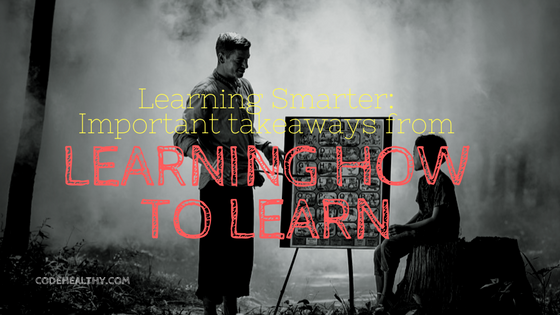
This course is taught by Dr. Barbara Oakley and Dr. Terrence Sejnowski on Coursera.
Lessons from week1
Dr. Oakley starts with explaining how the brain works. All of our thoughts, fears are in neurons.
There are two different modes of thinking.
Focused Mode of Thinking
For repeating thoughts, We use focused mode of thinking to solve the problem. As below, highlighted path represents an existing thought pattern followed to solve a problem.
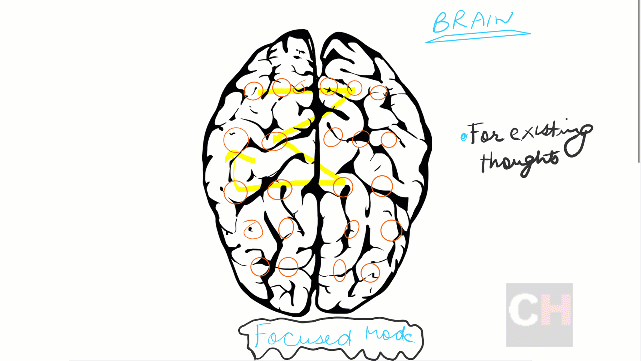
Diffused Mode of Thinking
It is the relaxed mode of thinking while taking shower, while running or while exercising. Diffused mode helps with conceptual understanding. 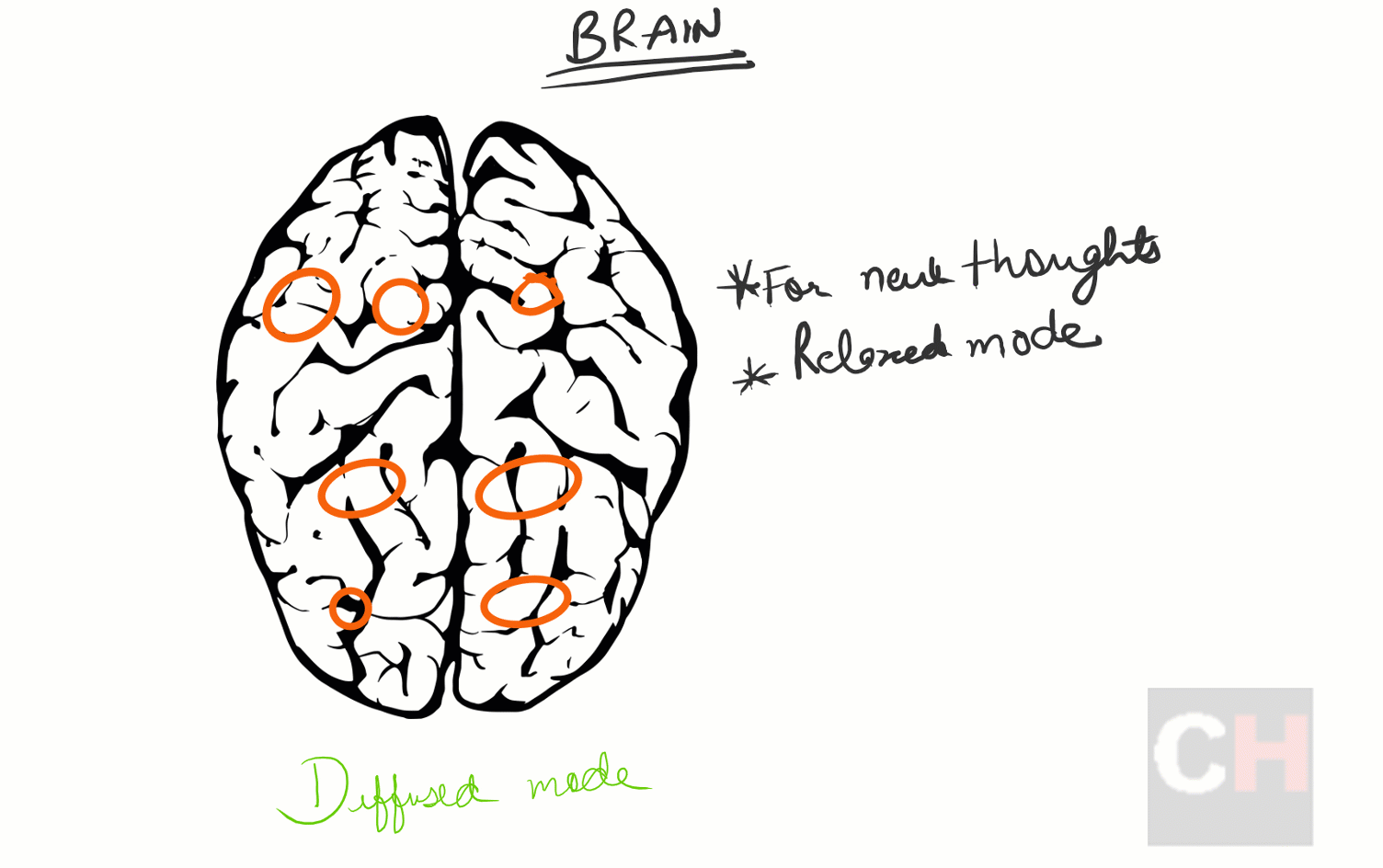
- Abstract ideas like programming need more practice to bring them into reality.
- Even if the idea is abstract, the neural networks are real and concrete if you strengthen them.
Tips From Week 1:
Solving problem creates new neural networks while looking for an answer does not.
Don’t look for a solution without trying to solve the problem:
Procrastination, Memory, and Sleep
Memory is of two types.
- working memory
- Long-term memory.
Working memory:
It is like a blackboard and holds about 4 chunks of information.
Its the reason, You need to repeat information like remembering phone numbers.
Long-Term Memory
It is like a storage warehouse having room for billions of items.
Spaced repetition methods help to process information from working memory to long-term memory.
Use flashcards. when mind relates pattern, it put pieces together. ( Anki is a freemium available on the major platform for SRS)
The Importance of sleep

Sleep is vital for effective learning. Being awake creates a toxic production in the brain. So, having a quality sleep tidy up learning ideas.
Interviews from week 1
Creativity comes with creative people. Isolated genius is no better these days.
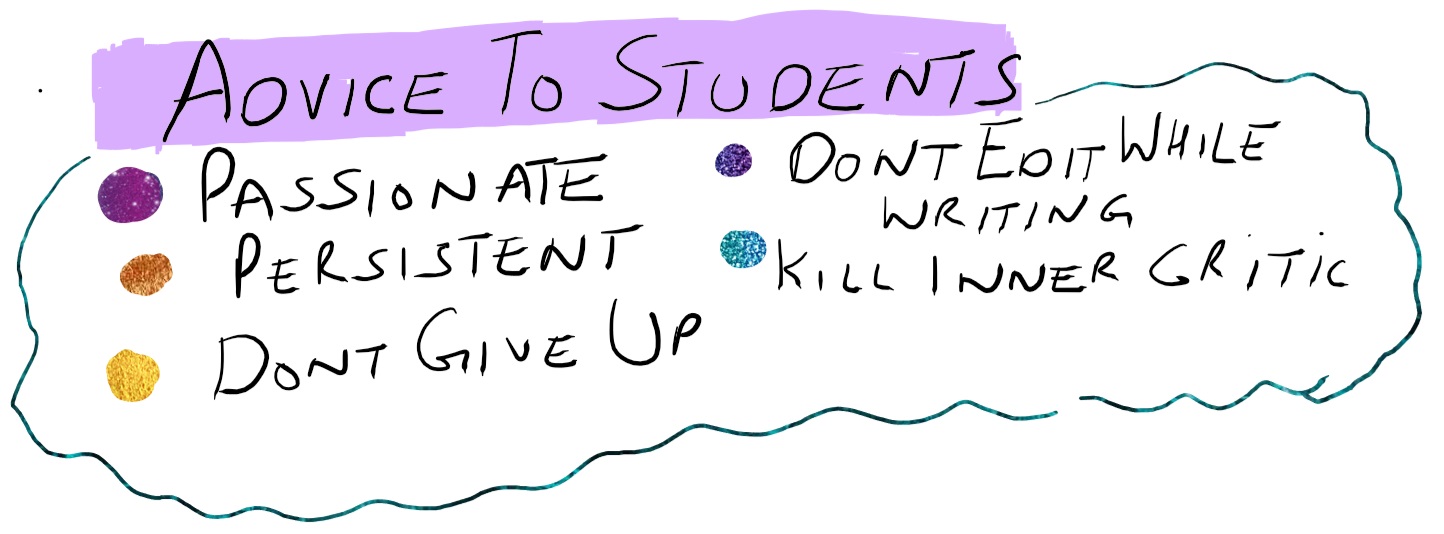
WEEK 2: What is a chunk
A Chunk is a network of neurons that unite scattered bit of information through meaning.
Focusing your attention is an important part of learning.
You can’t make connections when you are angry.
create conceptual chunks:
For example, Pop[sound]
- is easier to remember
- has a symphony of neurons underlying.
How to form chunk?
For example, if you want to learn how to hold a guitar.
watch someone else. Learn the pattern.
Learn small chunks. They get joined.
What is the Best chunk?
You don’t need to think about connecting neuron networks. Learning is a bit by bit process.
Illusions of competence.
It's that moment when you believe that you know the answers but fail during the real test. It's the illusion of knowledge.
- The solution is to self-test using tests and quizzes.
- The recall is better than book reading.
- Reading is only needed when there is a gap between revision.
- Recalling outside your zone of study provides subliminal clues
- When you recall at different positions, it makes you independent of locations.
Seeing the bigger picture (What motivates you)
Motivation is controlled by dopamine which is controlled by reward learning.
It releases dopamine when we have unexpected rewards.
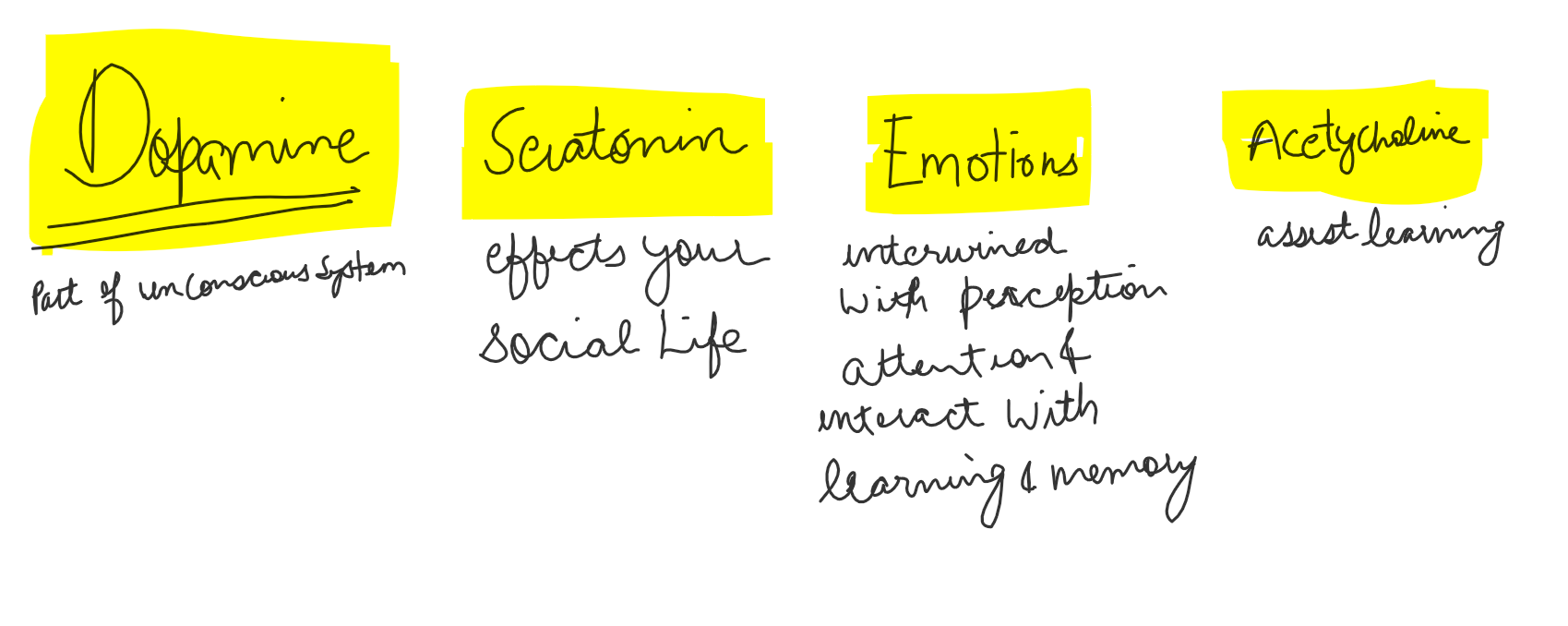
Lastly, Chunks get fade if not practiced.
Problem Solving Process
The sequential process of problem-solving is different from the intuitive process.
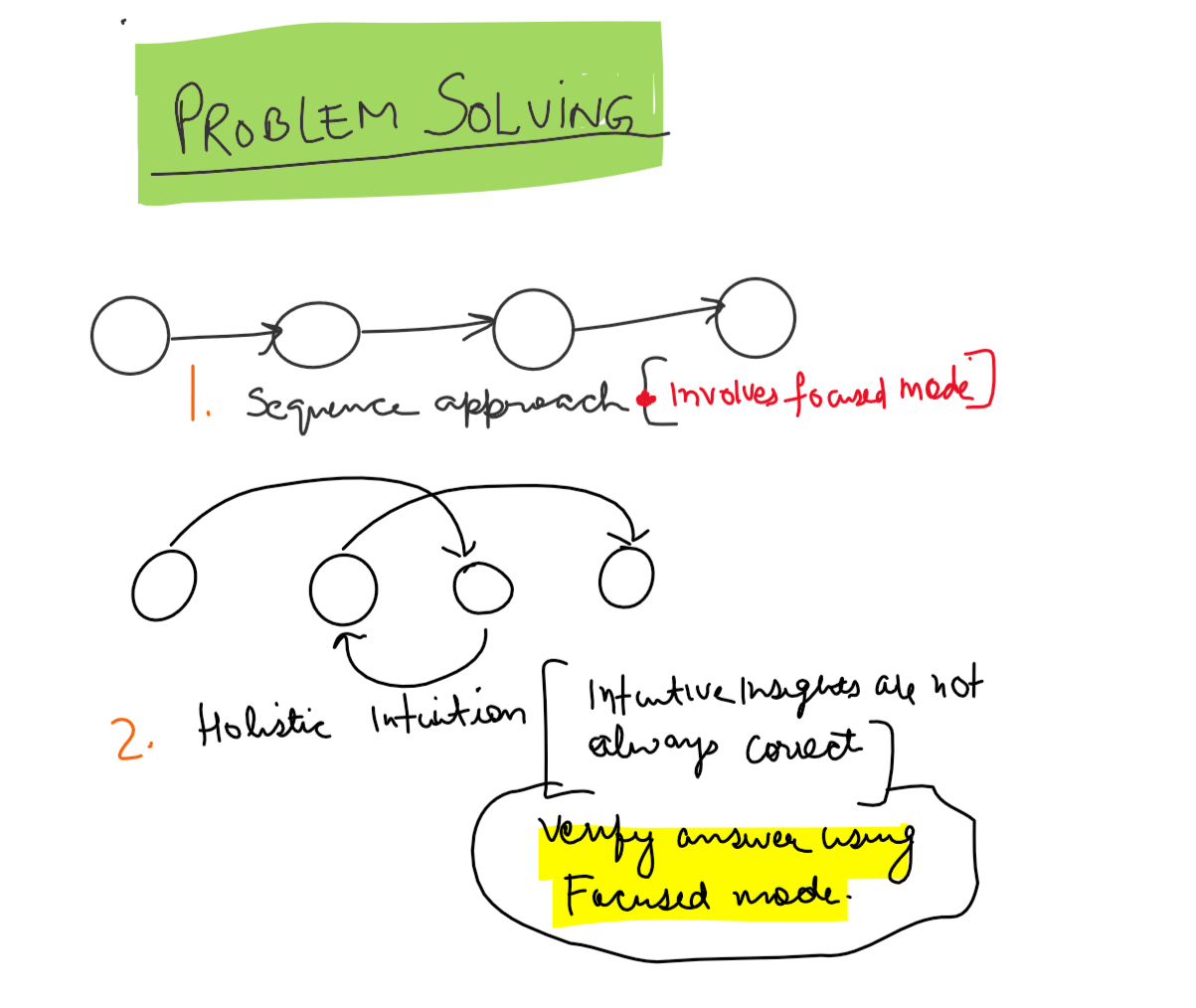
Both problem-solving methods are crucial and required to tackle new challenges.
Law of serendipity
Law of Serendipity says that Lady Luck favors the one who tries
- Focus on the thing that you are studying.
- Once you put the first problem or concept into your mental library, The next concept will go in more easily.
Overlearning: Studying again and again in the same session is not useful. Deliberate practice should be done
Einstellung
It refers to a man’s inclination to solve a given problem in a particular way despite the fact that better or more fitting strategies for solving the issue exist.
- Unlearn older ideas, Intuition can be wrong.
Tips from Interviews
Norman Fortenberry provides several tips.
- Team up with others.
- It’s important to take breaks.( it involves mental turnoff)
- Exercise helps to create neural networks.
- Explain to others. (Either validate your thoughts or find fallacy)
- Be Motivated. Have a mission.
- Make concrete projects
Week 3: Procrastination and Memory
Tackling procrastination
It takes a lot of willpower to do the tasks which you need to do.
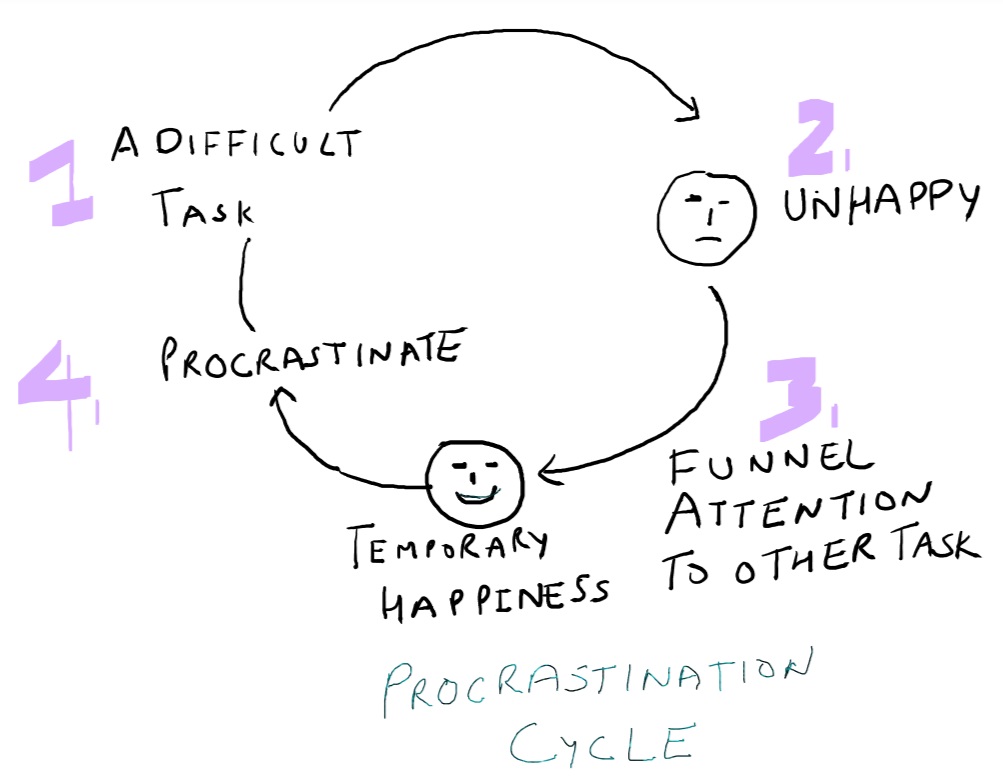
The process of procrastination starts when your brain feels that task at hand is difficult.
- You feel unhappy.
- You funnel attention to a present task.
- you are happy temporarily.
- You devise irrational excuses and procrastinate.
The secret of building new habits.
Creating new habits is 4 step process.
- cue. The ways to minimize it is to minimize distractions.
- quiet spot in the library.
- Leave phone aside.
- Routine: Which means to develop a plan
- The Reward: Have exciting and interesting rewards like read your favorite website. Setting the reward at a particular time means mini-deadline.
- The belief: Habits have power because you have belief in them. To change habits, you need to change the underlying belief. Believe that your new system will work. Hangout with classmates with a can-do-attitude.
process vs product
Focus on the process rather than the product or final outcome to become an efficient learner.
Learning new subject.
Realize that you will have a negative feeling at the start.
- Use Pomodoro Technique to focus.
- When distraction arises let it flow.
- Use Noise-canceling headphones
- study in a quiet environment
Focus on the process: The flow of time
The process relates to simple habits. On the other hand, focusing on the product triggers the Pain.
Other Tips to tackle procrastination:
- Developing an encouraging culture with like-minded friends can help to remember values.
- A weekly list of key tasks in a planner journal. (List of tasks you can reasonably work on.)
- Daily to-do list(check before sleep)
- Mix other tasks with learning. It helps to avoid prolonged sitting. You will improve quickly.
- Plan your quitting time. Try to squeeze a break time.
- Commit yourself to a routine and a task. Deliberately delay rewards until you finish.
- Watch for procrastination cues.
- Try putting yourself in a new environment. For example, the library.
- Gain trust on your new system.
Week4: How to Become a better learner
Exercise
- It helps new neuron to survive. Also, it helps all vital organs.
- Far more effective than any other method.
Practice:
Learning does not progress logically so each day adds an additional knowledge.
when you hit a wall, it indicates that your mind is restructuring.
It takes time to assimilate knowledge.
Make visual metaphor or analogy
Metaphors and models help in the physical understanding of the central idea. Metaphors also help glue an idea into your mind.Make a connection to neurons. Stories help to retain information easily.
No need for genius envy
- Avoid envy. Everybody has different gifts and talents.
- Imposter syndrome is like a tape which plays in your head. It’s very common.
Change your thoughts
Take responsibility for your own learning.
Empathy is not always beneficial.
Greater the achievement, more people gonna attack you.
Take pride in who you are, use as a secret talisman for success.
Not only Nobel Prize winners but most people face critics at all stages of life.
The interesting story of Santiago Ramon who achieved success after being a petty criminal in young age.
You define your limits not other people and defy the prejudices from other about, what you can achieve.
Unlocking your potential
The value of teamwork
Avoid blind spots and errors by brainstorming and working with others who are also smartly focused on the topic. Working in a team->useful for career-> can unfold new ways.
Warning: Groups studies are useful only if socialization talk is minimum.
Testing checklist:
The test is a mini recall of what you have learned so far.
Its wonderful way of concentrating the mind.
Dr. Barbara Oakley provides a series of questions to determine if you are doing the test in a correct way.
Hard Start: Jump to Easy
During an exam, start with the hardest problems but quickly jump (~ 2 minutes) to the easy ones.
It allows the diffused mode to work and allows to reach for a solution for hardest problem efficiently.
Final Words:
Remind yourself, how to do it, go ahead and push on. Finally, You have not truly learned until you can teach it to others.
This course provided some eye-opening insights into the complex working of the brain and hopefully will help to understand the process of learning better. Please share, if you find this review useful.
Rating: 